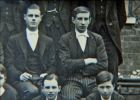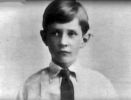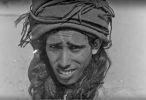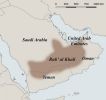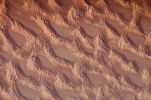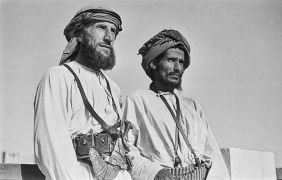British soldier and travel writer Wilfred Thesiger (June 3, 1910 in Addis Ababa - August 24, 2003, London) was a colonial explorer in the tradition of St John B Philby, Henry Morton Stanley, Sir Richard Burton or Thomas Edward Lawrence. His most important writings, based on his travels to remote areas of Africa and Asia, include descriptions of the societies of the Bedouins of the Arabian Peninsula and the Marsh Arabs of southern Iraq. His works display a deep admiration for the traditional cultures of the peoples that he lived among, as well as distaste for modern Western civilization and inventions such as motor vehicles and telecommunications. Those he saw as threats to indigenuous peoples’ unique ways of life.
In October 1946 Wilfred Thesiger wasnt the first Western explorer to cross the eastern sands of the Empty Quarter (Rub' al Khali) (that accolade going to Bertram Thomas and later, St John Philby) by camel. Rubʿ al-Khali, is a vast desert region in the southern Arabian Peninsula, constituting the largest portion of the Arabian Desert. It covers an area of about 650,000 square km) in a structural basin lying mainly in southeastern Saudi Arabia, with lesser portions in Yemen, Oman, and the United Arab Emirates. The Rubʿ al-Khali is the largest area of continuous sand in the world. It occupies more than one-fourth of Saudi Arabia’s total area and features varied topography. In the west the elevation is as high as 610 metres above sea level and the sand is fine and soft, while in the east the elevation drops to about 180 metres), with sand dunes, sabkhahs (salt flats), and sand sheets. One of the driest regions in the world, the Rubʿ al-Khali is virtually uninhabited and largely unexplored. However, vast reserves of petroleum are present beneath its sands. In 1948 Al-Ghawār, the world’s largest conventional oil field, was discovered in the northeastern part of the desert. Extending roughly north-south for some 260 km east of Riyadh, the Al-Ghawār field contains tens of billions of barrels of oil. Another significant operation, in the southeast near the United Arab Emirates and Oman, is Al-Shaybah, which includes refinery operations and also has large reserves of natural gas.
On October, 1946, Thesiger's original party of Rashid and Bayt Kathir Bedouin left Salalah, crossing the Jabal Qara mountains and following the interior wadis to the wells of Ma' Shadid and Shisr. At Shisr, Thesiger met with Muhammad al Auf, Salim bin Kabina, and the rest of the Rashid party, and together they continued on to Mughshin Oasis. Just after the party arrived in Mughshin Oasis, trouble struck the expedition when Mahsin bin Khuzai, senior leader of the Rashid Bedouin party, fell from his camel and broke his leg. As Mahsin was unable to continue, a small party was forced to split off from the group and remain behind.
Thesiger and the rest of the party continued on into the Ghanim Sands, but the mood had changed within the group. By the time the party reached Ramlat al Ghafah on December 2, a serious conflict had erupted between Thesiger and Sultan bin Ahmad, leader of the Bayt Kathir Bedouin party. Sultan refused to travel any further into the Empty Quarter and demanded the party turn back. Despite this pressure, four members of the party stood by Thesiger to continue the journey: Muhammad al Auf and Salim bin Kabina of the Rashid Bedouin, and Mabkhaut bin Arbain and Musallim bin Tafl of the Bayt Kathir Bedouin.
From Ramlat al Ghafah Thesiger's party continued over the high dunes of the 'Uruq ash Shaybah, crossing the Suhul al Kidan and Al Batin sands to arrive just south of Liwa Oasis in mid December. Continuing across the Emirate of Abu Dhabi, the party rode through Ramlat ar Rabbad before crossing into Oman at Wadi al 'Ayn. From here the party continued through the wide rocky wadis of Oman's Ad Dhahirah and Ad Dakhiliyah regions, crossing Wadi Hawshi and heading towards the coast. At Boi, Thesiger and his small band was reunited with Salim bin Tamtaim and the other members of the party who had remained at Mughshin. The combined party travelled across the Jiddat al Harasis to Yisub, and then through the Jabal Qara mountains to arrive back at Salalah on February 23, 1947.
Source: Journey biographies | Thesiger's Journeys in Arabia - First Empty Quarter Crossing 1946-7


